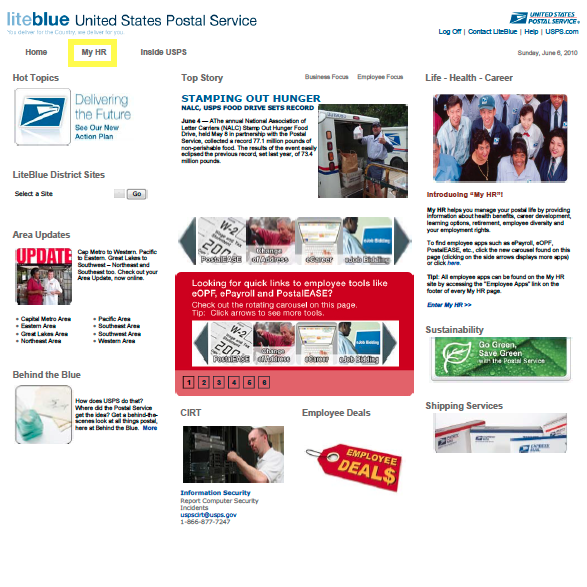 This article discusses some important tax-related issues relative to your annuity from the Thrift Savings Plan (TSP). Understanding the tax treatment of TSP payments can help you avoid costly surprises. Due to the complexity of the TSP and especially the tax treatment of TSP Annuity payments it is incredibly important that you either educate yourself completely on the various Tax regulations or you consult with a financial professional who understands your benefits. Making mistakes regarding your TSP Annuity Tax considerations can be very costly.
This article discusses some important tax-related issues relative to your annuity from the Thrift Savings Plan (TSP). Understanding the tax treatment of TSP payments can help you avoid costly surprises. Due to the complexity of the TSP and especially the tax treatment of TSP Annuity payments it is incredibly important that you either educate yourself completely on the various Tax regulations or you consult with a financial professional who understands your benefits. Making mistakes regarding your TSP Annuity Tax considerations can be very costly.
Federal Income Tax Withholding
Your contributions to the TSP were tax-deferred. If you have not yet retired, you have not paid taxes on those contributions, any agency contributions, or earnings from investments in your TSP account. You will owe taxes when you receive a distribution from your account and the amount you pay in taxes and/or penalties will depend on a number of factors, including your age, income, Social Security eligibility and payments.
The TSP reports all TSP distributions to the Internal Revenue Service (IRS), and to you, on IRS Form 1099-R, “Distributions from Pensions, Annuities, Retirement or Profit-Sharing Plans, IRAs, and Insurance Contracts.”
The TSP must withhold funds for federal income tax from payments it makes to you unless you are allowed to request reduced or no withholding. For purposes of IRS withholding, there are three types of payments:
- Eligible rollover distributions,
- Periodic payments, and
- Non -periodic payments
The TSP does not withhold for state or local income tax. However, the plan does report, on IRS Form 1099-R, all TSP distributions to your state of residence at the time of the payment (if that state has an income tax). You may need to pay state and local income taxes on your payment. See a financial professional or state or local tax official for specific information.
Special Note Regarding Annuities:
Payments you receive from an annuity that the TSP purchases for you are also subject to tax withholding. You will receive information from the annuity provider about making a withholding election.
Transferring or Rolling Over Your TSP Distribution:
Some payments from your TSP may be transferred or “rolled over” to a traditional individual retirement account (IRA), an eligible employer plan, or under certain conditions a Roth IRA. Such payments are called “eligible rollover distributions” (described below). Depending on your retirement income needs, it is a very good idea to consider “rolling over” the eligible portion of your TSP to an IRA. Because your TSP and Annuity have unique and complex characteristics it is incredibly important that you consult with a financial professional that has been appropriately trained in your special benefits before you make your election.
An eligible employer plan:
It includes a plan qualified under section 401(a) of the Internal Revenue Code, such as (1) a 401(k) plan, profit-sharing plan, defined benefit plan, stock bonus plan, or money purchase plan; (2) a section 403(a) annuity plan; (3) a section 403(b) tax-sheltered annuity; and (4) a section 457(b) plan maintained by a governmental employer.
A traditional IRA:
It is any IRA that is not a Roth IRA, a SIMPLE IRA, or an education IRA. Before-tax funds that are transferred from your TSP to a traditional IRA are not subject to tax until they are withdrawn from the IRA.
A Roth IRA:
It accepts only after-tax dollars, but provides tax-free growth. You are not eligible for a Roth transfer if either of the following conditions applies: (1) your modified adjusted gross income is over a certain amount or (2) you are married and file a separate return with certain income limitations. Further, you must pay taxes on the funds you transfer into a Roth IRA, pre-tax Employer Plans or IRAs; the tax liability is incurred for the year of the transfer.
Eligible Rollover Distribution:
If your payment is an eligible rollover distribution, you may ask the TSP to transfer part or all of the payment directly to your IRA or plan. If you receive an eligible rollover distribution directly, you may deposit (roll over) the payment into your traditional IRA, eligible employer plan, or Roth IRA yourself within a specified period of time to avoid added penalties. Depending on the type of plan, a withdrawal from it may be subject to different tax treatment and plan rules (such as different spousal consent rules) than a distribution from the TSP.
If you choose to have the TSP transfer part or all of your eligible rollover distribution:
- Your transfer to a traditional IRA or eligible employer plan will not be taxed in the current year and no income tax will be withheld.
- The entire amount of your transfer to a Roth IRA will be taxed in the current year. No income tax will be withheld at the time of the transfer. (You may need to pay estimated taxes to mitigate your tax liability.)
If you are over age 70-1/2 and a portion of your payment is a required minimum distribution, that portion cannot be transferred. Instead, it will be paid directly to you after 10% has been deducted for federal income tax withholding. This rule also applies if you are receiving monthly payments and elect to receive a final single payment that includes a required minimum distribution.
If the TSP pays an eligible rollover distribution directly to you, and you decide to do a “rollover” to a traditional IRA or eligible employer plan:
- You will receive only 80% of the taxable amount of the payment, because the TSP is required to withhold 20% for Federal income tax.
Your full payment will be taxed in the current year unless you roll over part or all of it within 60 days after you receive the payment. However, if you want to roll over 100% of the payment, you must replace the 20% that was withheld with your own funds. If you roll over only the portion you received, you will be taxed on the 20% that was withheld and not rolled over (regardless of the fact that you may have only received the 80%).
- You can roll over all or part of the payment to your traditional IRA or plan. The amount rolled over will not be taxed until you take it out of the IRA or plan.
You may be able to roll over your payment into a Roth IRA; the full amount rolled over will be taxed in the current year.
It is always advisable to talk with a knowledgeable financial professional who can help you with your roll-over questions and to help you make the most appropriate decisions given your individual circumstances.
Other Tax Rules
Repayment of Plan Loans
If you separate from federal service with an outstanding TSP loan and you do not repay the entire loan by the established deadline, the TSP must declare a taxable distribution of your outstanding loan balance your withdrawal request can be processed.
To avoid current tax (and, if applicable, an additional 10% penalty tax), you may deposit part or all of the taxable loan distribution amount into an IRA or an eligible employer plan within 60 days of the date of the taxable able distribution.
This rollover rule does not apply to taxable loan distributions declared while you are still employed.
Additional 10% Penalty Tax if You are Under Age 59-1/2
If you fail to roll over your TSP distribution and directly receive a TSP distribution before you reach age 59-1/2, in addition to the regular income tax, you may have to pay an early withdrawal penalty tax equal to 10% of any portion of the distribution not transferred or rolled over. The additional 10% tax generally does not apply to payments that are:
- Paid after you separate from service during or after the year you reach age 55;
- Made because you are totally and permanently disabled;
- Paid as substantially equal payments over your life expectancy;
- Annuity payments;
- Ordered by a domestic relations court;
- Made because of death; or
- Made in a year you have deductible medical expenses that exceed 7.5% of your adjusted gross income.
For Members of the Uniformed Services
The penalty tax does not apply to that portion of a TSP distribution (including the taxable distribution of a loan) which represents tax-exempt contributions from pay earned in a combat zone.
Relief from the 10% early withdrawal penalty is available to eligible Reservists called to duty for more than 179 days. The Reservist must have been activated after September 11, 2001 and must have received his or her distribution from the TSP during the period beginning on the date of the order or call and ending at the close of the active duty period. The Reservist may also be eligible to repay the distribution to an IRA (not the TSP). Participants should consult with their tax advisors, legal assistance officers, or the IRS regarding this relief.
Changing Your Monthly Payments
Participants receiving monthly payments may change the amount of those payments annually. If you elect either to change the fixed dollar amount of your payments or to change from payments based on life expectancy to a fixed dollar amount, the withholding amount from your payment may change. The withholding rules will be determined according to whether your new payments are eligible rollover distributions or periodic payments (based on your account balance at the time the payment changes).
In addition, changing from monthly payments based on life expectancy to a fixed monthly payment amount may make you liable for the 10% penalty tax on the payments you previously received, if you do so within 5 years of beginning your payments or before you are age 59-1/2. To learn more, see IRS Publication 575, Pension and Annuity Income, available at www.IRS.gov.
Required Minimum Distribution If You Are Over 70-1/2
If you are over age 70-1/2 and are separated from federal service, you must either withdraw your entire TSP account or begin receiving monthly payments by April 1 of the year following the year you turned 70-1/2. In addition, this April 1 date is the deadline for the TSP to start to distribute the IRS “required minimum distribution,” a minimum amount of the money in your account which you must receive each year.
Rules for Nonresident Aliens or Beneficiaries of Nonresident Aliens
Special tax withholding rules apply to TSP payments made to nonresident aliens and beneficiaries of nonresident aliens. To learn more, see the TSP tax notice “Tax Treatment of Thrift Savings Plan Payments to Nonresident Aliens and Their Beneficiaries.”







